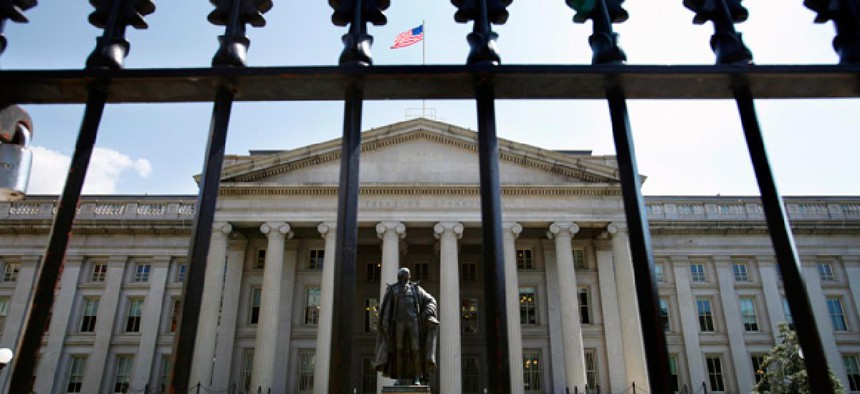How to delay a national default in 3 steps
Treasury can take certain actions to buy a little more time.
So how does a country that can’t borrow anymore stave off default? Mostly, it needs to just stop investing in things.
Treasury Secretary Timothy Geithner told Senate Majority Leader Harry Reid, D-Nev., in a letter this week that the nation will reach its debt limit—a cap on how much it can borrow—on Monday, unless Congress takes action to raise the limit. But, he said, the agency will be able to delay a default by employing so-called “extraordinary measures.”
Under normal circumstances, America's debt grows by about $100 billion a month. The extraordinary measures Geithner proposes, all of which have been used before, would free up about $200 billion. Still, he warned that policy uncertainty surrounding the tax hikes and spending cuts that comprise the year-end fiscal cliff make it difficult to predict how long the country has.
What is clear is that the extraordinary steps will at least buy the country some time. Here’s how the world’s largest economy will avert a default, in three steps:
1. Stop Replenishing Government Funds
Many of the steps Treasury will take hinge on temporarily halting reinvestment in certain government funds.
Take the Government Securities Investment Fund, one of five individual investment funds that make up the Thrift Savings Plan, a 401(k)-like federal retirement plan. The G Fund is made up of Treasury securities with a short lifespan of just one day. When they mature daily, they are typically reinvested. But, when the debt limit is reached, Treasury can choose not to reinvest. As a result, the department can almost immediately free up approximately $156 billion, according to Geithner’s letter. Treasury must replenish the fund once the debt ceiling is raised, so individuals who contribute to the plan will be unaffected as long as the limit is raised before the measure is exhausted.
The government also maintains the Exchange Stabilization Fund, which trades foreign currency to promote exchange-rate stability. The dollar portion of that fund is similarly invested in Treasury securities that mature daily. So Treasury could quickly pull its investments in the ESF, freeing up $23 billion.
Treasury is also allowed to stop investments to two federal-employee benefit programs, freeing up$16 billion from the Civil Service Retirement and Disability Fund and $1 billion from the Postal Service Retiree Health Benefits Fund. The one-off suspension of investment in these two funds, however, can only be done on Dec. 31, according to Geithner’s letter.
2. Temporarily Dip Into Benefits Funds
It’s not just new investments that Treasury has authority over in a debt-ceiling impasse. The department can also disinvest from the aforementioned CSRDF federal-employee benefits program by cashing in early on the Treasury securities that fund holds. That would make about $12 billion available over two months, according to Geithner’s letter. Such a move would not affect employees and retirees because the fund would have to be made whole once the debt ceiling is raised again, according to the letter.
3. Halt a “Safe Harbor” Program for Local Government Debt
Local governments often borrow money for large projects—the construction of new roads, purchases of heavy equipment, etc.—by issuing bonds. But they typically need somewhere to put the money they raise until it’s time to spend it. Enter Treasury. Forty years ago, the Department launched the State and Local Government Series securities program. This gives local governments what theCongressional Research Service calls a “safe harbor” in which to park that money.
The program issues anywhere between $4 billion and $17 billion of such securities a month, though even that range is subject to big monthly swings. Unlike the other measures, this one doesn’t free up money. It simply eliminates one driver of the debt.
NEXT STORY: When will the US actually hit its debt ceiling?



